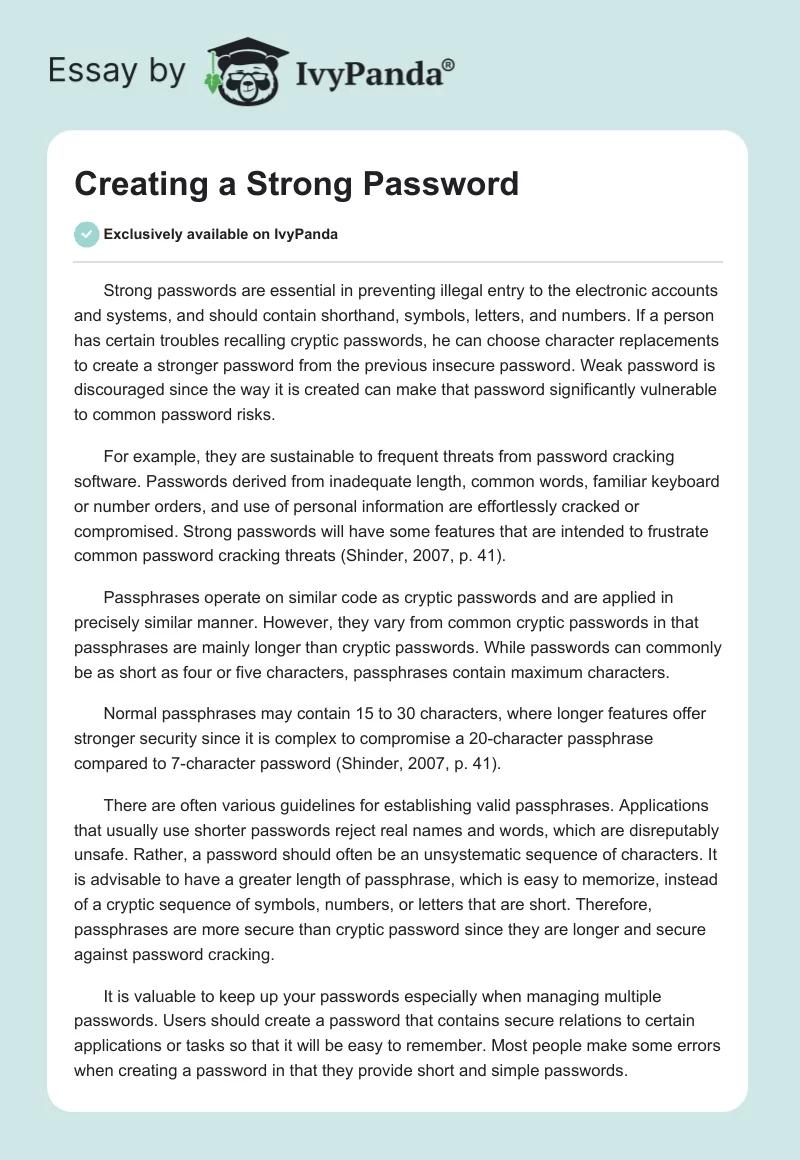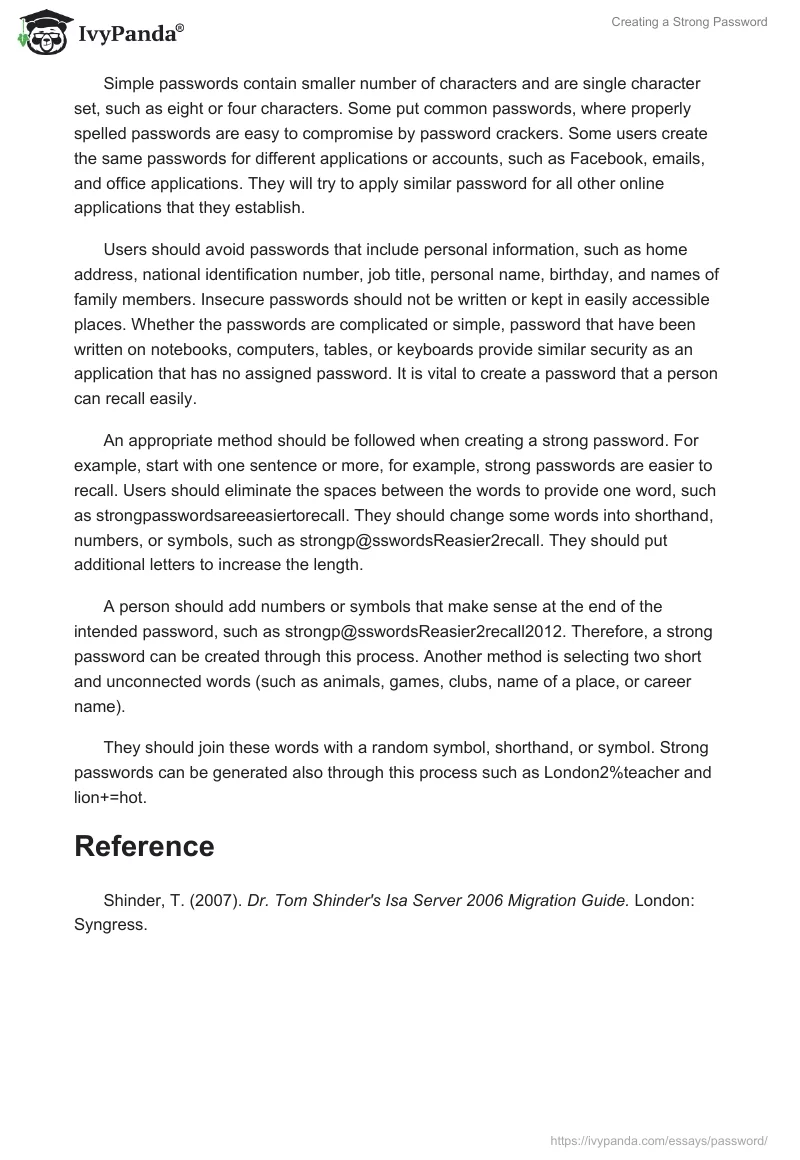Strong passwords are essential in preventing illegal entry to the electronic accounts and systems, and should contain shorthand, symbols, letters, and numbers. If a person has certain troubles recalling cryptic passwords, he can choose character replacements to create a stronger password from the previous insecure password. Weak password is discouraged since the way it is created can make that password significantly vulnerable to common password risks.
For example, they are sustainable to frequent threats from password cracking software. Passwords derived from inadequate length, common words, familiar keyboard or number orders, and use of personal information are effortlessly cracked or compromised. Strong passwords will have some features that are intended to frustrate common password cracking threats (Shinder, 2007, p. 41).
Passphrases operate on similar code as cryptic passwords and are applied in precisely similar manner. However, they vary from common cryptic passwords in that passphrases are mainly longer than cryptic passwords. While passwords can commonly be as short as four or five characters, passphrases contain maximum characters.
Normal passphrases may contain 15 to 30 characters, where longer features offer stronger security since it is complex to compromise a 20-character passphrase compared to 7-character password (Shinder, 2007, p. 41).
There are often various guidelines for establishing valid passphrases. Applications that usually use shorter passwords reject real names and words, which are disreputably unsafe. Rather, a password should often be an unsystematic sequence of characters. It is advisable to have a greater length of passphrase, which is easy to memorize, instead of a cryptic sequence of symbols, numbers, or letters that are short. Therefore, passphrases are more secure than cryptic password since they are longer and secure against password cracking.
It is valuable to keep up your passwords especially when managing multiple passwords. Users should create a password that contains secure relations to certain applications or tasks so that it will be easy to remember. Most people make some errors when creating a password in that they provide short and simple passwords.
Simple passwords contain smaller number of characters and are single character set, such as eight or four characters. Some put common passwords, where properly spelled passwords are easy to compromise by password crackers. Some users create the same passwords for different applications or accounts, such as Facebook, emails, and office applications. They will try to apply similar password for all other online applications that they establish.
Users should avoid passwords that include personal information, such as home address, national identification number, job title, personal name, birthday, and names of family members. Insecure passwords should not be written or kept in easily accessible places. Whether the passwords are complicated or simple, password that have been written on notebooks, computers, tables, or keyboards provide similar security as an application that has no assigned password. It is vital to create a password that a person can recall easily.
An appropriate method should be followed when creating a strong password. For example, start with one sentence or more, for example, strong passwords are easier to recall. Users should eliminate the spaces between the words to provide one word, such as strongpasswordsareeasiertorecall. They should change some words into shorthand, numbers, or symbols, such as strongp@sswordsReasier2recall. They should put additional letters to increase the length.
A person should add numbers or symbols that make sense at the end of the intended password, such as strongp@sswordsReasier2recall2012. Therefore, a strong password can be created through this process. Another method is selecting two short and unconnected words (such as animals, games, clubs, name of a place, or career name).
They should join these words with a random symbol, shorthand, or symbol. Strong passwords can be generated also through this process such as London2%teacher and lion+=hot.
Reference
Shinder, T. (2007). Dr. Tom Shinder’s Isa Server 2006 Migration Guide. London: Syngress.


